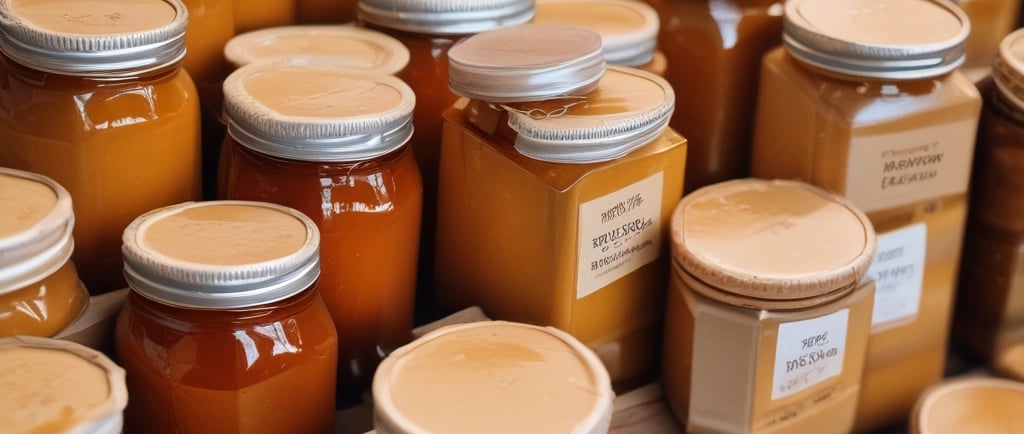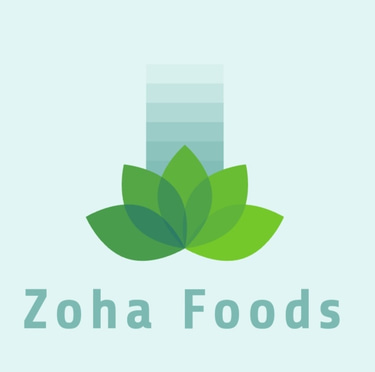How to Identify Fake Honey in the Market
Honey adulteration is a prevalent issue that poses significant challenges for consumers seeking authentic honey products. Various methods are employed to adulterate honey, primarily to increase profits by diluting pure honey with cheaper sweeteners. Read our blog to to Identify Fake Honey.
HONEY
Murad gujjar
10/2/20257 min read


Introduction to Honey Authenticity
The authenticity of honey has become a significant concern in recent years, as the market has witnessed an influx of fake or adulterated products. Consumers are increasingly aware of the potential health risks associated with consuming counterfeit honey, which often lacks the nutritional and medicinal benefits associated with pure honey. The process of adulteration can involve mixing authentic honey with cheaper sweeteners or other syrups, undermining the quality of the final product. This situation not only affects consumers but also poses challenges for legitimate producers who work hard to ensure the quality and purity of their honey.
Pure honey offers numerous health benefits, including antimicrobial properties, antioxidants, and digestive aids. It is also known to assist in wound healing and soothing sore throats. The consumption of adulterated honey can negate these benefits and may even result in unwanted side effects due to the presence of harmful additives. As a result, it has become imperative for consumers to make informed choices when purchasing honey, emphasizing the need to distinguish between authentic and fake products.
Moreover, the proliferation of counterfeit honey can have detrimental effects on the honey industry as a whole. Legitimate beekeepers may find their market share dwindling as consumers unwittingly choose cheaper, inferior products. This not only threatens the livelihood of responsible producers but also undermines the sustainability of honey production practices. The pressing need to identify real honey has led to the development of various techniques and tests that consumers can use to ascertain the authenticity of honey products available in the market. Understanding the significance of honey authenticity is the first step towards making wiser, healthier choices in honey consumption.
Common Types of Honey Adulteration
Honey adulteration is a prevalent issue that poses significant challenges for consumers seeking authentic honey products. Various methods are employed to adulterate honey, primarily to increase profits by diluting pure honey with cheaper sweeteners. One of the most common adulterants is sugar syrup, which is made from refined sugars that mimic the sweetness of genuine honey. This practice can drastically alter the taste and texture of honey, leading to a product that lacks the distinct floral notes characteristic of pure honey.
Another frequently used adulterant is high fructose corn syrup (HFCS), a sweetener derived from corn that is less expensive than natural honey. HFCS can significantly enhance the sweetness of honey without contributing any of the health benefits. This not only misleads consumers but also diminishes the nutritional value of the final product. Adulterated honey containing HFCS may also exhibit a lighter color compared to its pure counterparts, making it easier for fraudsters to market it as genuine honey.
In addition to these, other sweeteners such as cane sugar syrup and glucose syrup are often used to dilute honey. These substitutes can change the chemical properties of honey, impacting its flavor, consistency, and even its antioxidant potential. Furthermore, such adulteration can have health implications, especially for individuals with dietary restrictions related to sugar intake. Thus, understanding these common types of adulteration is essential for consumers who wish to ensure they are purchasing pure, high-quality honey. Being informed about the sophisticated methods employed to produce fake honey enables consumers to make wiser purchasing decisions and ultimately enjoy the many benefits of authentic honey.
Visual Inspection: What to Look For
When seeking to identify fake honey, conducting a thorough visual inspection can reveal a great deal about the product’s authenticity. First, the color of honey can vary significantly depending on the floral source. However, genuine honey typically exhibits a rich and vibrant hue. If the honey appears excessively dark or has an unnaturally uniform color, it may be indicative of improper processing or the addition of artificial coloring agents.
Clarity is another key visual indicator. Authentic honey is generally clear and free from impurities. If you notice cloudiness or the presence of particles suspended within the liquid, this could suggest that the product is adulterated or has undergone filtration processes that strip it of its natural properties. Furthermore, real honey often contains micro-crystals, especially if it has been stored for a long time. When inspecting honey, look for slight crystallization, which is a standard characteristic of high-quality honey.
The packaging itself can also provide critical insights into the authenticity of honey. High-quality honey often comes in glass jars or high-quality plastic containers that are designed to preserve its natural properties. Be cautious of honey sold in unattractive or unbranded packaging, as this can signal inferior quality. Pay close attention to labels; reputable honey typically includes information about the floral source, country of origin, and certifications indicating its purity and quality. Additionally, check expiration dates to ensure the product is still within its shelf life. Legitimate honey should last indefinitely when stored properly, but if the expiration date is prominently displayed and is close to being expired, it is advisable to inquire further about the product’s integrity.
Testing Techniques at Home
Identifying fake honey can be a challenging task, but several straightforward home tests can assist in determining its authenticity. These methods are simple to execute and require minimal ingredients, making them accessible for anyone interested in evaluating their honey. Three widely recognized tests include the water test, flame test, and vinegar test.
The water test is one of the easiest methods. Begin by filling a glass with water and adding a tablespoon of honey. Authentic honey will settle at the bottom and not dissolve quickly, whereas fake honey will dissolve and spread quickly in the water. This method effectively indicates the presence of added sugars or syrups often found in adulterated honey.
Next, the flame test can be performed using a cotton wick dipped in honey. By lighting the wick, one can observe the behavior of the honey. Genuine honey tends to burn efficiently, creating a steady flame, while fake honey may not catch fire due to the presence of moisture or additives. This test highlights the differences in composition between authentic and counterfeit honey.
Lastly, the vinegar test requires mixing a tablespoon of honey with a cup of water and adding a few drops of vinegar. If the mixture produces bubbles, this indicates the presence of artificial sweeteners or additives in the honey, suggesting it may not be pure. On the other hand, pure honey will not create bubbles in this mixture, confirming its authenticity.
By following these simple at-home tests, consumers can gain insights into the quality of their honey. These techniques not only enhance one's ability to identify fake honey but also encourage informed purchasing practices, ensuring that the honey they consume is genuine and free of adulteration.
Understanding Honey Labels and Certifications
When navigating the honey market, being able to interpret labels and certifications is crucial for ensuring the quality and authenticity of the product. Honey packaging often includes terms such as 'organic', 'raw', and 'pure', each carrying specific implications that consumers should be aware of. For instance, 'organic' honey is sourced from hives that adhere to organic farming practices, meaning that the bees foraged on flowers that were grown without synthetic pesticides and fertilizers. This label assures consumers of a certain standard of ecological farming, though it is essential to verify that the product is certified by a trusted organization.
Similarly, 'raw' honey refers to honey that has not been filtered or heated beyond natural hive temperatures. This form of honey retains its natural enzymes, vitamins, and minerals, making it a preferred option for many health-conscious consumers. However, consumers should be cautious, as the term 'raw' is not consistently regulated, leading to potential discrepancies in quality. Verifying certifications that align with this label can provide greater assurance.
The term 'pure' is often used to signify that the honey is not mixed with additives or other sweeteners. However, this term is not subjected to stringent regulation and can sometimes be misleading. Therefore, consumers are encouraged to look for third-party certifications, such as those from the True Source Honey certification program, which verify the authenticity and purity of honey. These certifications can significantly enhance consumer confidence, providing a degree of protection against counterfeit products. By gaining an understanding of these labels and certifications, consumers can make more informed choices, ensuring they select genuine honey that meets their quality expectations.
Where to Buy Real Honey: Trusted Sources
When searching for genuine honey, identifying reliable sources is paramount to ensure that you are purchasing a quality product. One of the most recommended avenues for acquiring authentic honey is local farmers’ markets. Such venues often feature direct-to-consumer sales, which allow you to engage with the beekeepers themselves. Here, you can inquire about their beekeeping practices, the floral sources for their honey, and their methods of extraction and bottling. This direct interaction not only fosters trust but also supports local agriculture and small business, contributing significantly to the sustainability of bee populations in your community.
Another viable option for sourcing real honey lies within reputable online retailers. Online platforms dedicated to organic and natural food products typically provide a selection of authentic honey varieties. It is crucial to read customer reviews and check certifications, such as organic or non-GMO labels, that many trusted sellers prominently display. Additionally, some brands offer transparency regarding their sourcing and production processes, which can further solidify confidence in their authenticity. This option combines convenience with access to specialized honey types that may not be readily available locally.
Health food stores also present a worthwhile alternative for purchasing genuine honey. These establishments usually curate their inventory carefully, focusing on high-quality organic products. Seeking out honey in health food stores allows you to find artisanal and raw local honey options. These types further enhance the health benefits while supporting local beekeepers. In sum, sourcing real honey necessitates vigilance and support for trustworthy suppliers. By prioritizing local farmers’ markets, reputable online retailers, and health food stores, consumers can play a crucial role in promoting a more transparent and sustainable honey supply chain.
Conclusion: Making Informed Choices
Throughout this blog post, we have examined the critical aspects of identifying fake honey in the market. As we have established, the consumption of adulterated honey can pose significant health risks and undermine ethical sourcing practices. Understanding how to differentiate between authentic and counterfeit honey is not merely an academic exercise; it is essential for promoting personal well-being and supporting sustainable agricultural practices.
It is vital for consumers to be aware of quality indicators such as texture, flavor, and sourcing information when purchasing honey. These characteristics can serve as initial filters in determining honey authenticity. Additionally, laboratory testing and brand reputation are crucial in verifying the credibility of the honey you intend to buy. By employing these identification techniques, consumers empower themselves to make conscious decisions regarding their food sources.
Furthermore, fostering awareness about honey's quality promotes ethical consumerism. As demand for high-quality, pure honey increases, producers are encouraged to maintain standards and contribute positively to beekeeping practices. Heightened awareness can also lead to consumers enacting pressure on manufacturers to prioritize integrity in their offerings. In this way, informed purchasing decisions not only impact individual health but also encourage broader industry shifts toward quality and authenticity.
In the final analysis, it is clear that the responsibility lies with consumers to educate themselves about potential risks involved in purchasing honey. By applying the knowledge gathered from this discussion, individuals can confidently navigate the market for honey, ensuring that they make choices that align with their health standards and ethical values. Ultimately, promoting awareness of honey authenticity is a worthwhile endeavor, one that benefits consumers and beekeepers alike.
